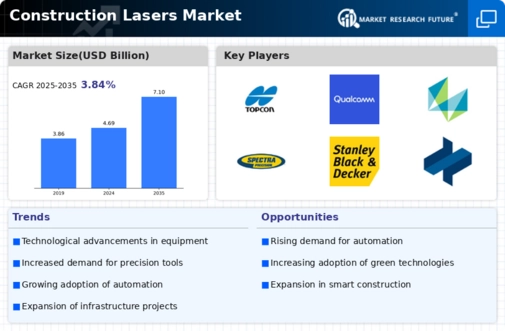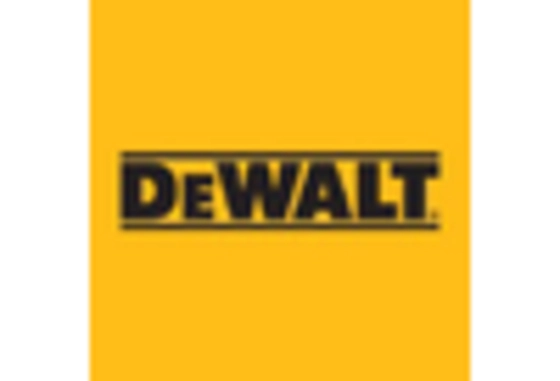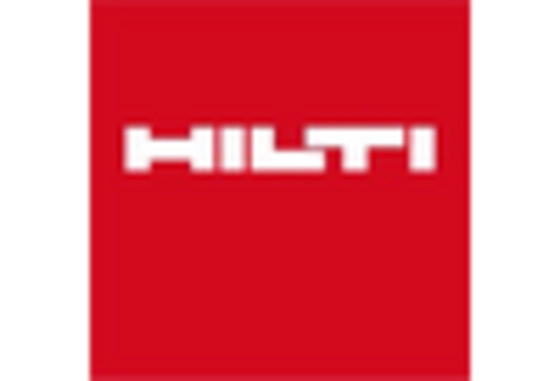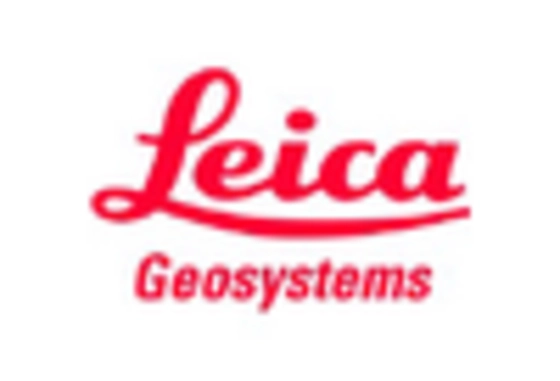Growth of Infrastructure Development
The Construction Lasers Market is significantly influenced by the ongoing growth of infrastructure development across various regions. Governments and private sectors are investing heavily in infrastructure projects, including roads, bridges, and buildings. This trend is expected to create a robust demand for construction lasers, as these tools are essential for ensuring the accuracy and efficiency of large-scale projects. Market analysis suggests that infrastructure spending could increase by 15% annually, thereby driving the need for advanced laser technology in the Construction Lasers Market. As infrastructure projects proliferate, the reliance on construction lasers will likely intensify.
Sustainability Focus in Construction
The Construction Lasers Market is witnessing a growing emphasis on sustainability, as construction companies strive to minimize their environmental impact. The adoption of energy-efficient laser systems aligns with the broader trend of sustainable building practices. For instance, lasers that utilize less energy and produce fewer emissions are becoming more popular. This shift not only meets regulatory requirements but also appeals to environmentally conscious clients. Market data indicates that the demand for sustainable construction practices is expected to grow by 25% over the next five years, further propelling the Construction Lasers Market as firms invest in eco-friendly technologies.
Rising Adoption of Automation in Construction
The Construction Lasers Market is benefiting from the rising adoption of automation in construction processes. Automated systems that incorporate laser technology are becoming integral to modern construction practices. These systems enhance productivity by reducing manual labor and increasing the speed of project completion. Data indicates that automation in construction can lead to a 20% increase in efficiency. As construction firms seek to leverage automation to stay competitive, the demand for construction lasers is expected to grow. This trend suggests a promising future for the Construction Lasers Market as automation continues to reshape the construction landscape.
Increased Demand for Precision in Construction
The Construction Lasers Market is driven by an escalating demand for precision in construction projects. As projects become more complex, the need for accurate measurements and alignments has never been more critical. Construction lasers provide the necessary precision that traditional methods often lack. Recent statistics show that projects utilizing laser technology experience a 40% reduction in measurement errors. This heightened accuracy not only enhances the quality of construction but also leads to cost savings by minimizing material waste. Consequently, the Construction Lasers Market is likely to expand as more contractors recognize the value of precision tools.
Technological Advancements in Construction Lasers
The Construction Lasers Market is experiencing a surge in technological advancements that enhance the efficiency and accuracy of construction projects. Innovations such as 3D laser scanning and advanced leveling systems are becoming increasingly prevalent. These technologies allow for precise measurements and real-time data collection, which can significantly reduce errors and rework. According to recent data, the integration of advanced laser technology has led to a 30% increase in productivity on construction sites. As construction firms seek to improve their operational efficiency, the demand for sophisticated laser tools is likely to rise, driving growth in the Construction Lasers Market.

















Leave a Comment